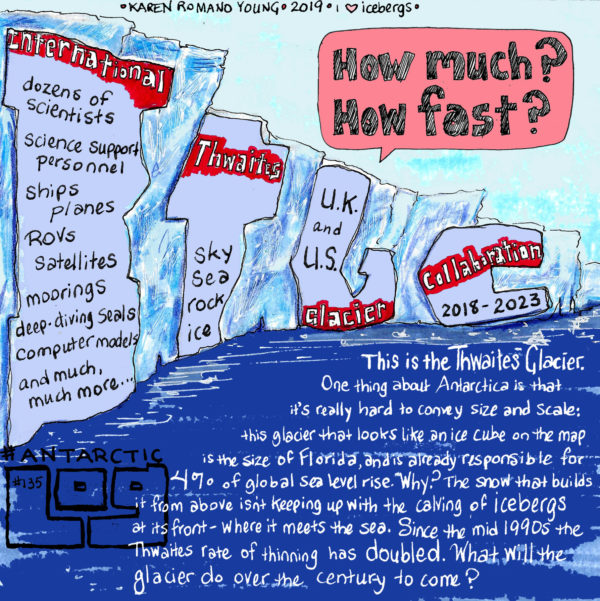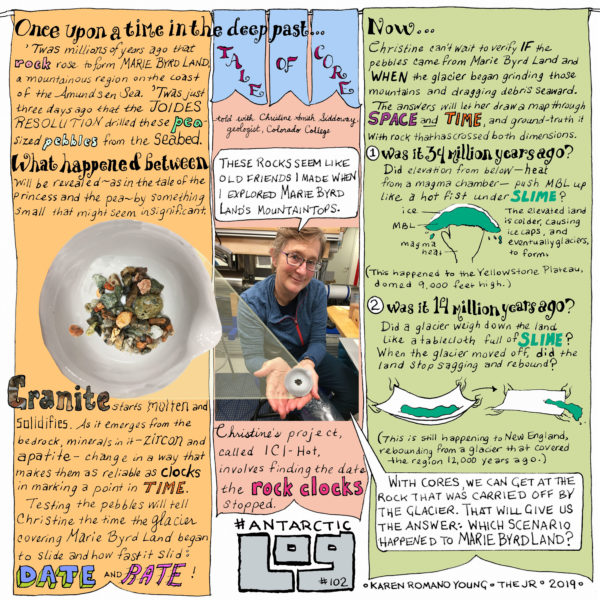8 July 2022
#AntarcticLog: Invisible Volcanoes
Posted by Olivia Ambrogio
By Karen Romano Young
Flying above Antarctica in 1929, Rear Admiral Robert E. Byrd peered down at a massive expanse of glacier, punctuated by the peaks of mountains — some dented with volcanic calderas — and named it for his wife Marie.

Subject to the cutting edge of scientific technology, Marie Byrd Land gradually gives up secrets that reveal the volcanic origins and dynamism of West Antarctica — which, geology tells us, developed quite differently from the more stable East Antarctica across the Transantarctic range. It includes the Thwaites Glacier, the so called “DoomsdayGlacier.”

By camping on top of it, observing it from space, and delving beneath it (with drills, with radar, with seismic sensors), and examining the relics its activity has dropped to the seafloor, researchers — such as Colorado College’s Christine Smith Siddoway — virtually peel back the ice sheet. What they learn helps them build a clearer story about the continent’s past — and models for the future.

–Karen Romano Young is a writer, artist, deep-sea diver, and polar explorer. Follow her on Twitter & Instagram.


 The Plainspoken Scientist is the science communication blog of AGU’s Sharing Science program. With this blog, we wish to showcase creative and effective science communication via multiple mediums and modes.
The Plainspoken Scientist is the science communication blog of AGU’s Sharing Science program. With this blog, we wish to showcase creative and effective science communication via multiple mediums and modes.